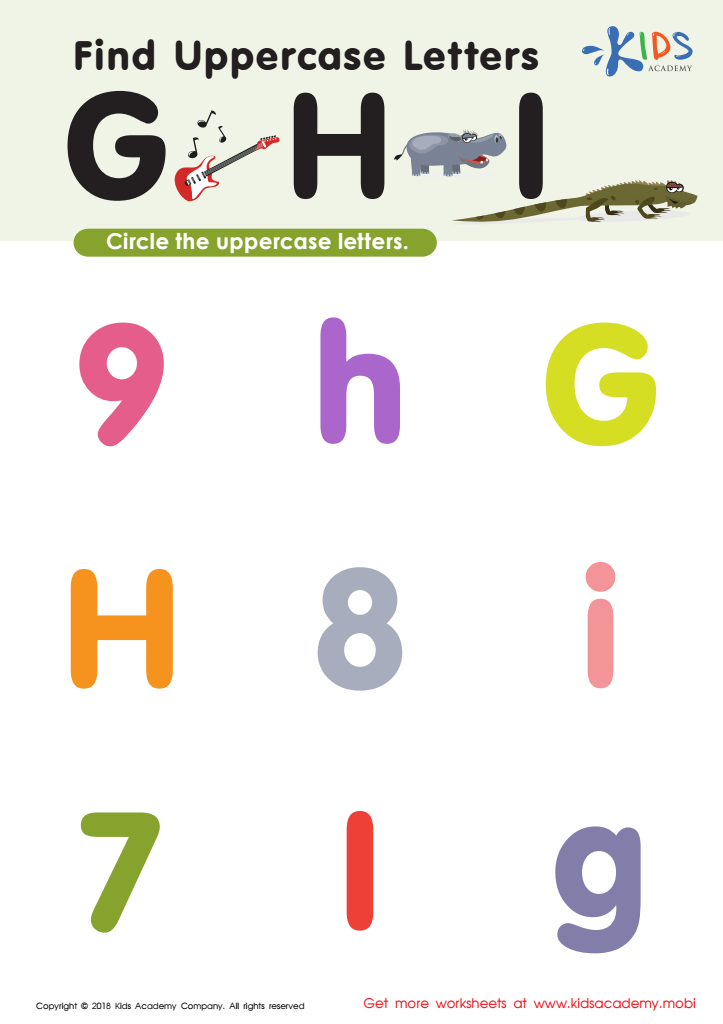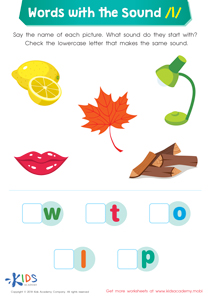Alphabet familiarity Uppercase Letters Worksheets for Ages 3-5
4 filtered results
-
From - To
Discover our engaging Alphabet Familiarity Uppercase Letters Worksheets designed specifically for ages 3-5! These fun and interactive worksheets help young learners recognize and understand uppercase letters through a variety of activities. From tracing and matching to coloring and identifying letters, each resource fosters essential alphabet skills. Our worksheets encourage early literacy development in a playful manner, making learning enjoyable. Perfect for teachers and parents alike, these resources support classroom learning or enrichment at home. Enhance your child's alphabet familiarity today with our user-friendly worksheets that spark creativity and build confidence in early reading skills! Check them out and watch your child's skills flourish!


Find Uppercase Letters G, H, and I Worksheet


Find Uppercase Letters Worksheet


Find Uppercase Letters J, K, and L Worksheet


Find Uppercase Letters A, B, and C Worksheet
Alphabet familiarity, particularly with uppercase letters, is crucial for children aged 3-5 as it lays the foundation for their literacy development. At this stage, children are naturally curious about letters and language, making it an ideal time for them to engage with the alphabet. Recognizing and naming uppercase letters enables young learners to decipher printed words, which is essential for reading.
Understanding uppercase letters helps children develop early writing skills. When children learn to recognize uppercase letters, they can begin to write their names and other familiar words, boosting their confidence and ownership of language. Additionally, uppercase letters are predominantly used in titles, signs, and other important print materials that children encounter daily, making this knowledge pertinent to their environment.
Furthermore, introducing uppercase letters promotes cognitive development through identification and categorization, valuable skills that extend beyond literacy. Early exposure encourages phonemic awareness as children start to associate letters with sounds, a critical precursor to reading.
Overall, parents and teachers should prioritize alphabet familiarity in young children as it not only enhances their reading and writing abilities but also enriches their overall learning experience, fostering a love for language that will last a lifetime.
 Assign to My Students
Assign to My Students





















